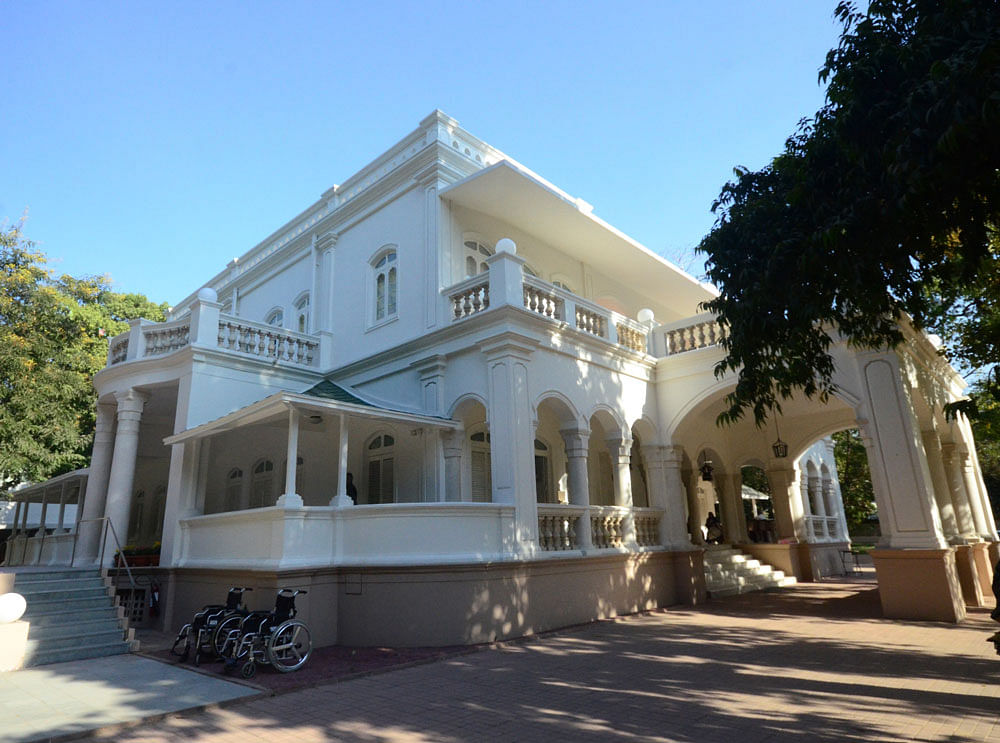
India has very few industrial families that have been leading lights for over 17 generations! Lalbhais from Ahmedabad are one such family that has earned this distinction. Known for their business acumen and association with brands such as Arvind, Arrow, Flying Machine, Allen Solly, etc., the Lalbhais also have a reputation of giving back to society.
Other than industry and economy, their biggest contribution perhaps has been in the field of education. Local folklore in Ahmedabad goes that a leading administrator in the city asked Lalbhai for a piece of land to set up educational institutions. They both walked up a small hillock and when Lalbhai asked how much land would be required, the person replied, “As far as the eye can see” and lo behold, Lalbhai immediately agreed to giveaway the land on a 99-year lease for a token fee of Re 1! And today some of the best-known educational institutions are housed on the land donated by Lalbhais.
Continuing this tradition of philanthropy towards society, the family has come together to share its personal art collection with the people by building a museum named after their grandfather Kasturbhai.
Kasturbhai Lalbhai Museum is nestled in two buildings that housed the family for over a century in Shahibaug area.
Built in 1905, the mansion is the legacy of the family of three Lalbhai brothers – Chimanbhai, Kasturbhai and Narottambhai – who had made the house their abode.
The museum as it is shaped today is brainwave of Jayshree Lalbhai, wife of Arvind Limited Chairman-cum-Managing Director Sanjay Lalbhai. The Lalbhai family moved out to the outskirts of the city at the end of twentieth century, leaving the family wondering what to do with the majestic ancestral mansion. “It is then we thought of this idea of creating a museum with collection that always existed in storage. We thought of bringing alive our family legacy as a tribute to our dadaji (grandfather) Kasturbhai who was an institution builder par excellence and an avid art lover and collector. I and my family lived in this very house till 1997-98 and once we decided to give it a new lease of life, we sought help of renowned architect and a friend Rahul Mehrotra to renovate the building,” Jayshree Lalbhai said.
And for Rahul it has been a challenge and work of over two-and-a-half years to bring the five-year dream of Jayshree and her husband to life. “We did not want to break the house and build a big hall instead. The family lived in it and the building has great stories to share so I wanted to keep it. So we used the same material and technique of 1905 to redo the building while maintaining its façade and key elements within. And wherever necessary, we used lime plaster and terrazzo,” said Rahul, who works with premier B-school Indian Institute of Management, Ahmedabad, on retaining the charm created by Louis Kahn.
Cultural hotspot
The Kasturbhai Lalbhai museum complex with two buildings -- one constructed in 1905 and another in the 1930s – will host exhibitions, retrospectives and works by young artists. “We have added a small amphitheatre with a seating capacity of 250 for performing arts. Situated next to iconic Calico Museum, this area has the potential to be a cultural hotspot in the city,” Sanjay Lalbhai said.
The proximity of these two unique museums thus gives visitors an option to take a peek into history of two of the oldest families that have shaped modern India in their respective fields.
At Kasturbhai Lalbhai museum, visitors can feast their eyes on an eclectic collection of over two millennia of Indian art, handpicked by Kasturbhai personally, including miniatures and bronze collection of Tagore family that he had acquired in 1930s; paintings from different schools, including Marwari, Mughal, Deccan, Persian, Pahari and Bengali; Tibetan thangkas, painted postcards from pre-independence India and sculptures craft in stone, metal and wood. And guiding one along would not be any professional guides but students of art history, who work part-time as guides and continue with their academics.
The second building built in 1930s, Claude Batley house, houses contemporary paintings by masters as M F Hussain, S H Raza, Amrita Sher Gill, Ram Kumar and many more, under one roof. “It was a pretty old building and we had to completely refurbish the building to give it a contemporary look maintaining the simplicity of our lifestyle,” Lalbhai says as he moves around with enthusiasm to show off the collection that he and his wife had collected over the years.
Other than art, the Lalbhais also seek to build a special gallery showcasing the history of their family through 14 generations and 400 years,beginning with Shantidas Jhaveri, a royal jeweller of Mughal emperor Akbar. Lalbhais descend from the family of Nagarsheth (city chief) of Ahmedabad, recognised by the Mughals, Marathas and English over time. Once Khushalchand, the grandson of Shantidas is even said to have paid ransom to the Marathas to save Ahmedabad from plunder in 1725.
The upcoming gallery will have family photographs, letters, correspondence, farmans (royal orders) given to Lalbhai family and books, which mention members of Lalbhai family. The family is also working on digitising photographs and letters. This structure too is being given shape under guidance of Rahul Mehrotra.
“Reversibility is important in restoring old buildings. Our generation is taking a judgement call and if the coming generation believes otherwise, it can dismantle the structure in 4-5 days and shift it completely,” Rahul said.
So next time, if you do decide to heed the clarion call of kuchh din toh gujaro Gujarat mein, then you have one more destination to visit.